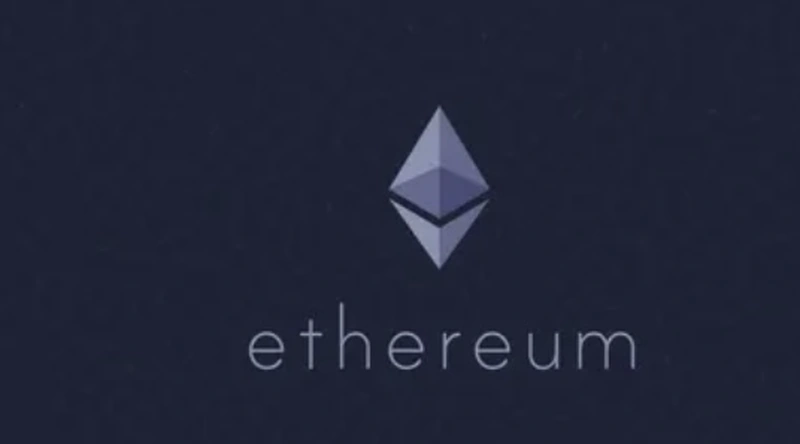Unlocking the Future of Finance: A Deep Dive into DeFi and Liquidity Staking
DeFI

In the ever-evolving world of finance, Decentralised Finance (DeFi) has emerged as a revolutionary force, challenging traditional banking systems and empowering individuals with unprecedented control over their assets. At the heart of this transformation lies liquidity staking—a sophisticated mechanism that combines staking rewards with liquidity provision to enhance yields and ecosystem efficiency. This article explores the intricacies of DeFi, delves into the mechanics of liquidity staking, examines its benefits and risks, and looks ahead to its potential future. Whether you're a crypto novice or a seasoned investor, understanding these concepts is crucial in navigating the digital economy of 2025 and beyond.
What is DeFi? A Primer on Decentralized Finance
Decentralized Finance, or DeFi, refers to a broad category of financial applications built on blockchain technology, primarily Ethereum and other smart contract-enabled networks like Binance Smart Chain, Solana, and Polkadot. Unlike traditional finance (TradFi), which relies on centralized institutions such as banks, brokers, and exchanges, DeFi operates on peer-to-peer protocols that are open, transparent, and permissionless. This means anyone with an internet connection and a crypto wallet can access services like lending, borrowing, trading, and investing without intermediaries.
The roots of DeFi trace back to the launch of Bitcoin in 2009, which introduced the concept of decentralized money. However, it was Ethereum's introduction of smart contracts in 2015 that truly ignited the DeFi boom. Smart contracts are self-executing code that automates agreements, eliminating the need for trust in third parties. By 2020, DeFi's total value locked (TVL)—a metric measuring the amount of assets committed to DeFi protocols—surged from under $1 billion to over $15 billion, fueled by projects like Uniswap, Aave, and Compound.
As of mid-2025, DeFi's TVL stands at an impressive $150 billion, reflecting widespread adoption amid regulatory clarity in regions like the EU and UAE. Key components of DeFi include:
- Decentralized Exchanges (DEXs): Platforms like Uniswap and PancakeSwap allow users to swap tokens directly from their wallets, using automated market makers (AMMs) instead of order books.
- Lending and Borrowing Protocols: Services such as Aave and MakerDAO enable users to lend assets for interest or borrow against collateral, often at competitive rates.
- Yield Farming and Staking: Users lock up assets to earn rewards, which brings us to liquidity staking—a hybrid approach that's gaining traction.
DeFi's appeal lies in its inclusivity. In developing economies, where banking access is limited, DeFi provides financial services to the unbanked. However, it's not without challenges, including scalability issues, high gas fees on Ethereum, and security vulnerabilities from smart contract exploits.
Understanding Liquidity Staking: The Backbone of DeFi Efficiency
Liquidity staking is an advanced DeFi strategy that merges two core concepts: liquidity provision and staking. In traditional staking, users lock their cryptocurrencies in a proof-of-stake (PoS) network to validate transactions and earn rewards, as seen in Ethereum 2.0 or Cardano. Liquidity provision, on the other hand, involves depositing token pairs into liquidity pools on DEXs to facilitate trades, earning a share of trading fees.
Liquidity staking takes this a step further by allowing users to stake their liquidity provider (LP) tokens—receipts issued when you add liquidity to a pool—into specialized protocols for additional rewards. This creates a compounding effect, where users earn fees from liquidity provision plus staking yields, often in the form of governance tokens or native cryptocurrencies.
How Liquidity Staking Works: A Step-by-Step Breakdown
- Providing Liquidity: Start by depositing equal values of two tokens (e.g., ETH and USDC) into a DEX pool like Uniswap. In return, you receive LP tokens representing your share of the pool.
- Staking LP Tokens: Transfer these LP tokens to a staking platform, such as SushiSwap's Onsen or Balancer's vaults. Here, your tokens are locked for a set period, contributing to the protocol's liquidity while earning rewards.
- Earning Rewards: Rewards come from multiple sources:
- Trading fees (typically 0.3% per swap on Uniswap).
- Protocol incentives, like governance tokens (e.g., UNI or SUSHI).
- Yield boosters from integrations with other DeFi apps.
- Compounding and Exiting: Users can auto-compound rewards to maximize yields or unstake at any time (subject to lock-up periods). Upon exit, redeem LP tokens for the original assets plus accumulated fees.
Popular platforms for liquidity staking in 2025 include:
- Curve Finance: Specializes in stablecoin pools with low slippage and high APYs (Annual Percentage Yields) up to 20%.
- Yearn.finance: Automates yield farming by optimizing LP staking across protocols.
- Convex Finance: Enhances Curve staking with boosted rewards via its CVX token.
Liquidity staking has evolved with Layer 2 solutions like Arbitrum and Optimism, reducing fees and enabling faster transactions. Innovations such as concentrated liquidity (introduced by Uniswap V3) allow providers to focus capital in specific price ranges, increasing efficiency and potential returns.
The Benefits of Liquidity Staking in DeFi
Liquidity staking offers compelling advantages that drive its popularity:
- High Yields: In a low-interest-rate world, DeFi staking can yield 10-50% APY, far surpassing traditional savings accounts. For instance, staking LP tokens in a blue-chip pool like ETH/USDT on Balancer might net 15% from fees alone, plus bonus tokens.
- Passive Income: Once set up, it's largely hands-off, with auto-compounding tools handling reinvestments.
- Ecosystem Participation: Stakers often receive governance rights, allowing votes on protocol upgrades. This democratizes finance, giving users a say in platforms they support.
- Risk Diversification: By spreading assets across pools, users mitigate volatility. Stablecoin-focused staking, for example, offers steady returns with lower exposure to crypto price swings.
- Financial Inclusion: No credit checks or geographic barriers—anyone can participate, fostering global economic empowerment.
Real-world examples abound. During the 2024 DeFi summer resurgence, liquidity stakers on Solana's Raydium earned triple-digit APYs amid meme coin hype, turning modest investments into substantial gains.
Risks and Challenges: Navigating the DeFi Landscape
Despite its allure, liquidity staking isn't risk-free. Key pitfalls include:
- Impermanent Loss (IL): When token prices diverge, liquidity providers may end up with less value than if they held the assets outright. For volatile pairs like BTC/ETH, IL can erode 20-30% of principal.
- Smart Contract Vulnerabilities: Hacks, like the $600 million Ronin Bridge exploit in 2022, highlight risks. Always audit protocols via tools like Certik or PeckShield.
- Rug Pulls and Scams: Newer projects may exit scam, draining pools. Stick to established platforms with high TVL.
- Regulatory Uncertainty: Governments are tightening rules; for example, the U.S. SEC's 2025 crackdown on unregistered staking services could impact yields.
- Market Volatility: Crypto prices fluctuate wildly, amplifying losses in leveraged staking.
To mitigate these, use insurance protocols like Nexus Mutual, diversify across chains, and monitor APYs via dashboards like DeFi Llama.
#defi #liquiditystaking #web3 #crypto #bitcoin #uniswap #aave #liquiditypools #Finance #LAYER2BLOCKCHAIN #ETHEREUM


